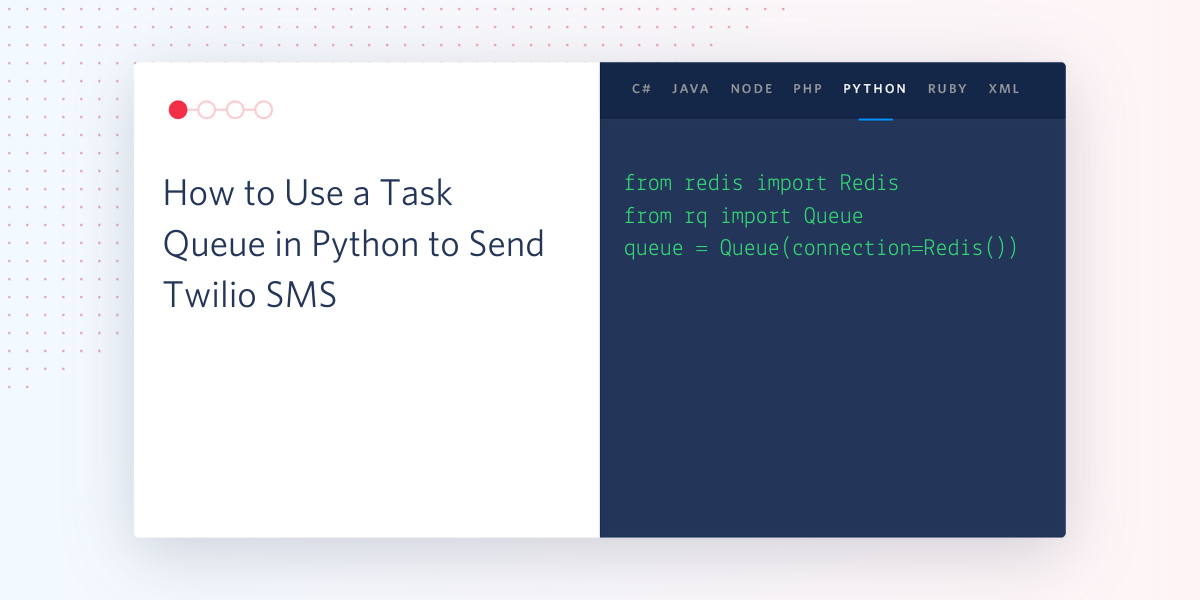It’s frustrating to deal with an API that enforces a rate limit, especially if you have a US or Canada phone number and can only send one SMS message per second. Fortunately as a developer, we can find a workaround solution so that you can continue to send out text messages timely and stick to your schedule without receiving 429 status codes.
In this tutorial we will implement a task queue in Python to send Twilio SMS messages in a timely manner.
Tutorial Requirements
- Python 3.6 or newer. If your operating system does not provide a Python interpreter, you can go to python.org to download an installer.
- A free or paid Twilio account. If you are new to Twilio get your free account now! (If you sign up through this link, Twilio will give you $10 credit when you upgrade.)
Let’s talk about task queues
Task queues are a great way to allow tasks to work asynchronously outside of a single request. This is incredibly helpful when managing heavy workloads that might not work efficiently when called all at once, or when making large numbers of calls to a database that return data slowly over time rather than all at once.
There are many task queues in Python to assist you in your project, however, we’ll be discussing a solution today known as RQ.
RQ, also known as Redis Queue, is a Python library that allows developers to queue jobs that are processed in the background. Using the connection to Redis, it’s no surprise that this library is super lightweight and offers support for those getting started for the first time.
By using this particular task queue, RQ makes it possible to process jobs in the background with little to no hassle.
Set up the environment
Create a project directory in your terminal called “twilio-taskqueue” to follow along.
$ mkdir twilio-taskqueue
$ cd twilio-taskqueue
Install a virtual environment and copy and paste the commands to install rq and related packages. If you are using a Unix or MacOS system, enter the following commands:
$ python3 -m venv venv
$ source venv/bin/activate
(venv) $ pip install rq requests rq-scheduler python-dotenv pytz twilio
#developers drawing the owl #python #git #github

